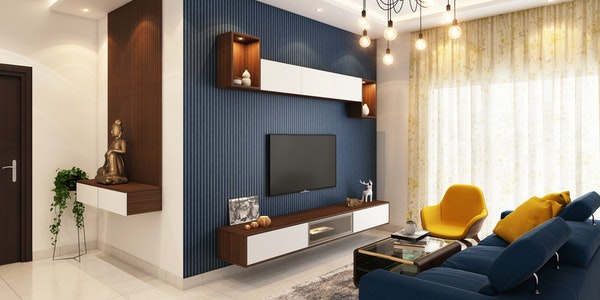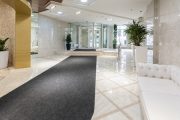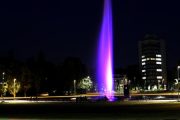A few Practical Tips
- The configuration of the living room lamps and lanterns should be conducive to creating a warm and welcoming environment, making guests feel at home. Generally install a main lamp in the center of the room and a floor lamp next to the sofa. It is best to install a three-watt energy-saving lamp on the same side of the TV to reduce visual fatigue when watching TV. However, it is not advisable to install a chandelier in a living room with a floor height of less than 2.7 meters. Ceiling lights can make the room appear taller. The living room has high illuminance requirements, and three-primary-color fluorescent lamps can be used for light.
- The study room is a place for work and study at home, which requires high illuminance. Take a study room of about 15 square meters for example, the power of the main lamp can be: fluorescent lamp 30-40 watts, incandescent lamp 100 watts. For the local lighting lamps used on the writing desk, the power of the incandescent lamp is the best at 60 watts.
- The bedroom is a space for sleep and rest. It should give people a sense of quiet and leisure, and avoid dazzling light and dazzling lighting. Some friends are accustomed to reading in bed, and it is best to adjust the brightness and angle of the bedside lamp. The simple way is to install two lights, one on and one dark.
- The humidity in the bathroom is relatively high, the lamp should have the functions of waterproof and moisture-proof and not easy to rust, and the insulation performance of the lamp should be good. The light source can generally be an incandescent lamp with a high color rendering index.
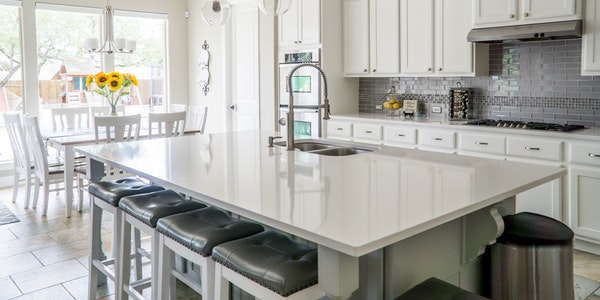
- The cooking fume in the kitchen is relatively large and often needs to be wiped off. Choose an easy-to-clean type, glass or enamel lampshade, and equipped with a moisture-proof lamp socket. Install local lighting under the wall cabinet of the whole cabinet to increase the illuminance of the operating table.
After understanding the functional requirements of lighting fixtures in each room, we continue to visit the lighting market. Nowadays, there are an endless stream of refurbished lamps on the market, round and square flat, hanging hanging inlay, dark green and milky white and transparent. So which one is suitable?
The color of the lamp should obey the color of the entire room. In order not to destroy the overall color design, you must pay attention to the color of the lampshade and shell of the lamp to be harmonious with the color of the wall, furniture, and curtains.
Families with tight room space are best not to install too luxurious and fancy lamps, because this will increase the sense of crowding. The auxiliary lamp of local lighting is also the same as the main lamp. In addition to the beauty of appearance, it is necessary to pay more attention to its lighting effect. The maximum applicable power of a luminaire is an easily overlooked link and should be carefully confirmed when purchasing.
The last step is to select the light source for the lamp. There are many kinds of light sources suitable for home use on the market. Incandescent lamps are warm light sources with a yellowish light color. Ordinary fluorescent lamps are cold light sources with a bluish light color. In addition, the three-primary-color fluorescent lamps and energy-saving fluorescent lamps that are similar to natural light colors on the market have a wide variety of light colors. There are warm light colors and cold light colors, you have a lot of choice.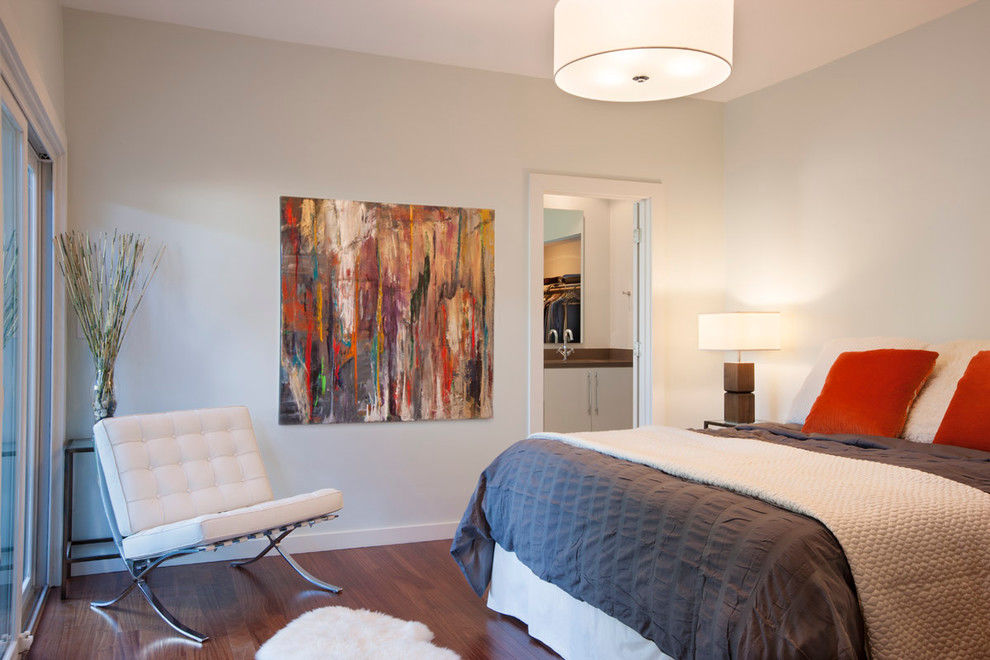
When choosing a light source, the color temperature must be clearly marked. It is best to choose a warm light with a color temperature of about 3000K in a family. The higher the color temperature index, the more bluish white.
Lighting energy-saving optimization measures
Light source selection
- Full use of natural light
Natural light is an energy that is worth cherishing and making full use of. Natural light has two components: one is daylight; the other is the astigmatism of the sky. Daylight is the light beam directly irradiated by the sun; astigmatism in the sky is the scattering of sunlight by particles in the air. So natural light is inexhaustible and inexhaustible.
When natural light enters the interior space of the building, the electric light source can be used as a supplementary light source. In this way, the rational use of natural light can reduce the need for electric light sources and reduce the consumption of lighting energy. Therefore, it is necessary to increase the daylighting windows and pay attention to the direction of opening windows to increase the daylighting area in the architectural design. At the same time, fiber optic lighting and solar lighting systems can be used to introduce natural light into the room.
- Full use of reflected light
To make full use of the reflected light of the environment is to make full use of the reflectivity of the indoor light-receiving surface, which can effectively increase the brightness of the room and thus improve the utilization rate of light.
In order to improve the indoor lighting effect, the reflectivity of the ceiling should be as high as possible, preferably 90%, because the reflectivity of the ceiling is very important for the uniform distribution of light in the room.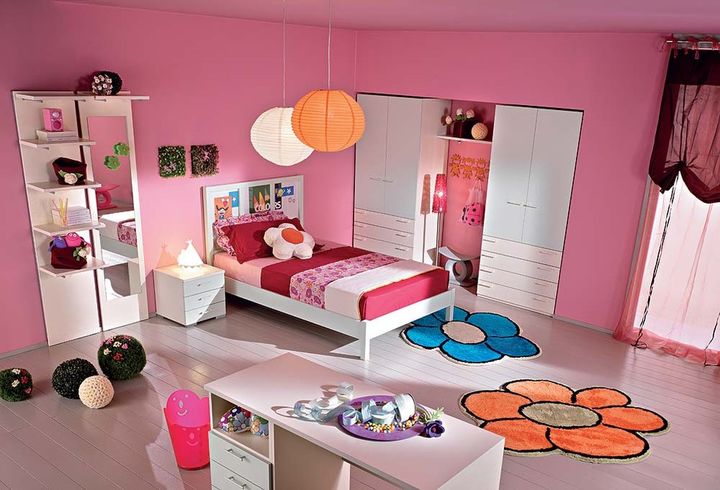
The reflectivity of the wall should be slightly lower than that of the ceiling, and it should be controlled above 65%. Furniture can have a reflectivity similar to that of walls. As for the reflectivity of the floor, it should not be too high, because too high will affect the line of sight of the work. Generally speaking, light colors have higher reflectivity than dark colors. For example, the reflectivity of a white wall is 55% to 75%, while that of an untreated cement wall is only 20% to 30%.
Lamp selection and installation
- Type selection
Use high-efficiency and energy-saving new lamps and lamps with high lighting coefficient.
Artificial light sources are heat radiation light sources and gas discharge light sources. Thermal radiation light sources include incandescent lamps and tungsten halogen lamps. The light-emitting principle is the thermal radiation of tungsten filaments in the incandescent state. Since the external input energy is equal to the sum of the energy lost by radiation, conduction and convection, most of the input energy, that is, electrical energy, is converted into heat energy and invisible light, and the luminous efficiency is very low.
The working principle of gas discharge light source is gas discharge radiation, and the main types are fluorescent lamps, high pressure mercury lamps, high pressure sodium lamps and metal halide lamps. For example, a gas discharge light source mainly uses a fluorescent lamp in a house. The principle is that the ultraviolet light radiated by the mercury vapor excites the fluorescent substance on the inner wall of the lamp tube to indirectly emit light. The temperature of the fluorescent lamp is very low, the heat loss is very small, so the luminous efficiency is high, generally 3 to 4 times that of the incandescent lamp. Therefore, unless special needs, for example, writing desk lamps should try to use fluorescent lamps.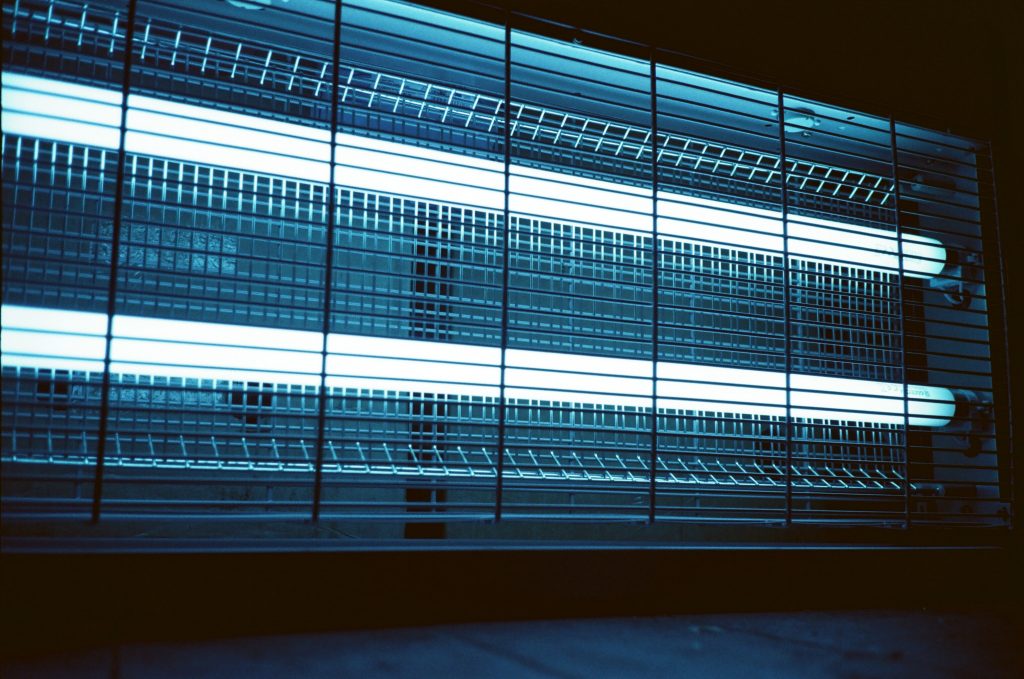
The main types of fluorescent lamps are straight tube fluorescent lamps and compact fluorescent lamps.
At present, preheating start-up fluorescent lamps are widely used, and the types are T-12, T-8, and T-5.
The nominal diameter of the T-12 thick tube fluorescent lamp is 38 mm, and the tube wall is coated with halophosphate phosphor.
The nominal diameter of the T-8 thin tube fluorescent lamp is 26 mm, and the tube wall is coated with three primary color phosphors, which can better convert ultraviolet rays into more visible light.
The T-5 fluorescent lamps all use three-color solid mercury, which has good color rendering, high efficiency, environmental protection, and energy saving.
Compact fluorescent lamps are mainly used in houses. The lifespan of compact fluorescent lamps is as long as 8 000~10 000 h, and the luminous efficiency is much higher than that of incandescent lamps, and the energy consumption is only 1/4 of that of incandescent lamps with the same luminous flux. Therefore, the use of compact fluorescent lamps can significantly save energy. The tube of the compact fluorescent lamp is detachable and needs to be used with a lamp equipped with a ballast.
- Ballast selection
A ballast is a control device used to start and limit the current of a fluorescent lamp. In order to reduce the power consumption on the ballast, power-saving ballasts should be used.
The important parameter to determine the energy-saving ballast is the system power factor. For example, the system power factor of an inductive ballast is between 0.45 and 0.55. Therefore, the starting current and temperature of the lighting power supply line are large. To this end, terminal compensation is required to compensate the power factor of the system to above 0.85, and the power supply line loss will be reduced by about 70%.
The types of ballasts are ordinary magnetic ballasts, electronic ballasts and energy-saving magnetic ballasts. Among them, the magnetic ballast has mature technology, stable quality, but large power consumption, which accounts for about 20% of the lamp power.
Although electronic ballasts have low power consumption and a power factor above 0.9, their performance is unstable, reliability is poor, and mission life is short.
Energy-saving inductive ballast is a kind of low-loss ballast improved on the basis of ordinary inductive ballasts in terms of materials, structure, and manufacturing process. Not only its own power consumption is small, it accounts for about 12% of the lamp power, it has high reliability, and its life is the same as that of ordinary inductive ballasts. Therefore, energy-saving inductive ballasts should be used, and electronic ballasts should be used where technology permits.
- Installation height
There is a great relationship between light illuminance and exposure distance. When the lamp is installed higher, the illuminance of the illuminated surface will be lower. Therefore, for a certain illuminated surface, the higher the lamp installation, the higher the power required will increase, resulting in a waste of electrical energy.
Therefore, the height of the lamp from the working surface should be reasonable, otherwise too high will cause the light source to be lost, and too low will cause unsafe factors. At the same time, local lighting should be considered as much as possible, so that not only can the light source be closer to the working surface but also will not increase the power of the indoor overall lighting fixture, thereby saving power.
3 Lighting design
- Reasonable choice of illuminance value
Lighting must meet people’s requirements for light in various activities. The quality of lighting directly affects people’s vision health, activity efficiency and comfort. Lighting calculations include illuminance, brightness, and glare calculations.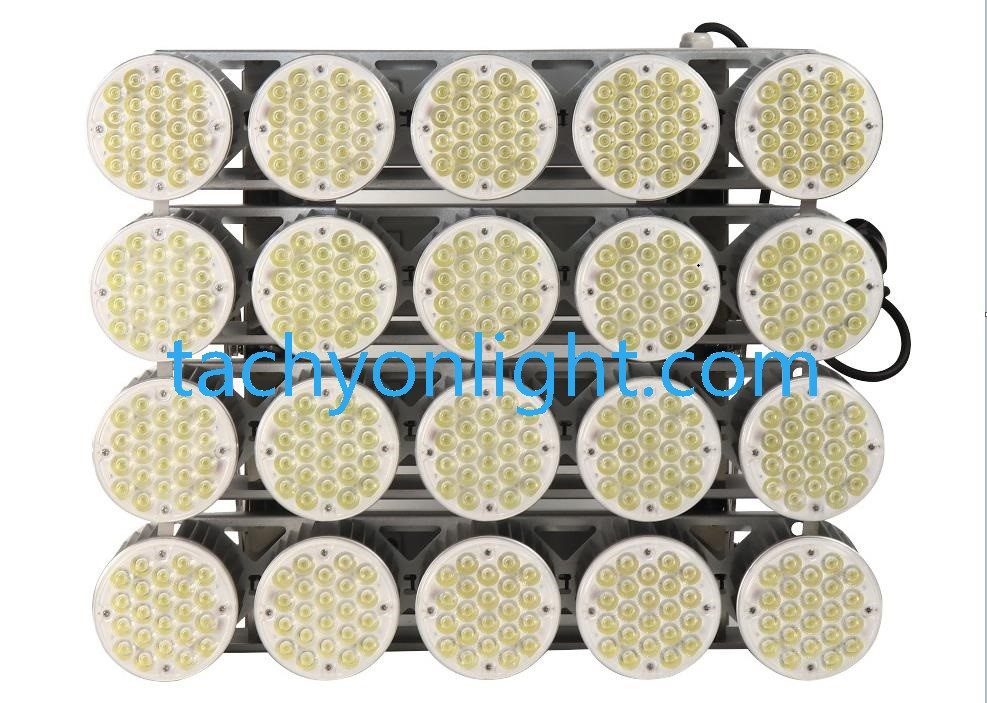
Too low illuminance will damage people’s eyesight and affect life and study, while unreasonably high illuminance values will lead to waste of electrical energy. Therefore, the selection of the illuminance value must be adapted to the visual work performed. Reasonable illuminance should be determined according to the illuminance standards set by the country and the work and activity places.
- Reasonable use of local lighting
Not every corner needs uniform illumination. When there are special requirements for high illuminance in a local area, the fixed or mobile lighting that is limited to the working part is local lighting. It is limited to the key function lighting of a limited work area, and it is a supplement to the lack of ambient light. The use of local lighting to meet the high illumination requirements in a small area can reduce unnecessary electrical energy waste and achieve reasonable use of electrical energy.
- Reasonable design of control circuit
The lighting control circuit in the house should be based on the area, and the lighting should be adjusted according to individual requirements, and the control should be divided and grouped. The lighting control switch should be installed in an easy-to-operate position so that the lights can be turned off in time. At the same time, local lighting should be controlled separately so that it can be switched on and off separately when in use.
For the living room, bedroom and other areas that are not required for fixed lighting, dimming lights can be selected to avoid waste caused by excessive illumination when it is not needed.
The lighting of corridors, aisles and other areas where people will not stay for a long time can be automatically controlled by switches. For example, infrared sensor switches, touch-type electronic delay switches, etc., to ensure that the lighting is automatically turned off when a person leaves, so as to avoid the waste of lighting when there is no one.
For the lighting of residential courtyards and porches, photoelectric automatic control devices can be used. It is automatically turned on at dusk and turned off in the early morning, effectively preventing the waste caused by people’s negligence in the morning.
At the same time, intelligent control is the development trend of energy-saving lighting control in the future. Intelligent lighting is a combination of intelligent technology and lighting, which can make the lighting time more accurate and improve energy efficiency on the premise of greatly improving the lighting quality.
- Reasonable design of power supply and distribution lines
The main factors affecting the loss of the lighting circuit are the power supply mode and the cross-sectional area of the wire. The world’s mainstream lighting power supply generally adopts 220V or 110V three-phase four-wire AC power grid directly grounded.
The lighting system has three power supply modes: single-phase two-wire, two-phase three-wire, and three-phase four-wire. Among them, three-phase four-wire power supply has much smaller line loss than other power supply modes. Therefore, the lighting system should use three-phase four-wire power supply as much as possible. At the same time, the three-phase balance is ensured in the power supply and distribution system to avoid waste of electric energy due to reactive power compensation. And in the design of lighting power supply and distribution lines, try to choose the shortest line in order to reduce the loss of power in the line due to transmission.

